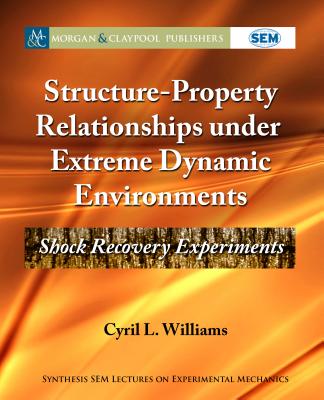Compressible Fluid Dynamics and Shock Waves
暫譯: 可壓流體動力學與衝擊波
Sasoh, Akihiro
- 出版商: Springer
- 出版日期: 2020-01-30
- 售價: $7,920
- 貴賓價: 9.5 折 $7,524
- 語言: 英文
- 頁數: 276
- 裝訂: Hardcover - also called cloth, retail trade, or trade
- ISBN: 9811505039
- ISBN-13: 9789811505034
-
相關分類:
流體力學 Fluid-mechanics
海外代購書籍(需單獨結帳)
商品描述
2. Motions of gas particles related to thermodynamics2,1 Fundamentals of thermodynamics2.2 Thermal speed and flow velocity2.3 Pressure2.4 Energy and temperature2.5 Ideal gas and its equation of state2.6 Entropy2.7 Enthalpy, total temperature and total pressure2.8 Multi-component gas
3. Basic equations for flow3.1 Conservation equations3.1.1 Conservation of mass3.1.2 Conservation of momentum3.1.3 Conservation of energy3.1.4 Other relations3.1.5 Similarity in inviscid flow3.2 Galilean transformation3.2.1 Inertial frame of reference3.2.2 Galilean transformation3.2.3 Application to flow conservation equations4. Discontinuity4.1 Conditions and categories4.1.1 Rankine-Hugoniot relations4.1.2 Categories4.2 Normal shock wave4.2.1 General relations4.2.2 Relations for thermally perfect gas4.2.3 Glancing incidence4.2.4 Stability of shock wave4.2.5 Shock propagation with boundary layer4.3 Oblique shock wave4.3.1 Relations for oblique shock wave4.3.2 Mach wave4.3.3 Dual solutions4.3.4 Attached and detached shock waves4.4 Instability of discontinuities4.4.1 Rayleigh-Taylor instability4.4.2 Richtmyer-Meshkov instability4.4.3 Kelvin-Helmholtz instability
5. Quasi-one-dimensional flows5.1 Control volume and basic equations5.1.1 Control volume5.1.2 Conservation of mass5.1.3 Conservation of momentum5.1.4 Conservation of energy5.1.5 Equation of state5.1.6 Speed of sound5.1.7 Flow Mach number5.1.8 Relation among derivatives5.2 Flow characteristics5.2.1 Influence coefficients5.2.2 Effects of duct cross-sectional area5.2.3 Effects of heating/cooling5.2.4 Effects of friction5.2.5 Effects of volume force5.2.6 Choking condition5.3 Duct flow with friction
6. System with source terms6.1 Generalized Rankine-Hugoniot relations6.2 Detonation/deflagration6.2.1 Regime of solution6.2.2 Detonation6.2.3 Deflagration6.2.4 Variation in entropy6.2.5 Variation in energy6.2.6 ZDN model6.2.7 Cellular structure in detonation6.3 Ram accelerator6.3.1 Operation principle and performance6.3.2 Derivation of thrust6.3.3 Thermally choking6.3.4 Experiments6.4 General form for jet propulsion6.5 Air-breathing engine
7. Two-dimensional flows7.1 Compression/expansion waves and Prandtl-Meyer function7.2 Prandtl-Meyer expansion7.3 Supersonic flow over a cone7.4 Shock wave reflection7.4.1 Reflection patterns in steady flows7.4.2 Shock polar7.4.3 Two-shock theory7.4.4 Three-shock theory7.4.5 Transition criteria7.4.6 Exercise: Supersonic flow over triangle
商品描述(中文翻譯)
1. 壓力波的傳播
1.1 聲波的傳播
1.2 自由飛行物體的聲波
1.3 珠子系統的運動與波的傳播
1.3.1 活塞-珠子碰撞
1.3.2 珠子-珠子碰撞
1.3.3 活塞與珠子的運動
1.3.4 特徵速度
1.3.5 平均粒子速度
1.3.6 動能
1.3.7 壓縮比
1.3.8 活塞上的力
1.4 固體碰撞中的壓力波傳播
2. 與熱力學相關的氣體粒子運動
2.1 熱力學基礎
2.2 熱速度與流速
2.3 壓力
2.4 能量與溫度
2.5 理想氣體及其狀態方程
2.6 熵
2.7 焓、總溫度與總壓力
2.8 多組分氣體
3. 流動的基本方程
3.1 守恆方程
3.1.1 質量守恆
3.1.2 動量守恆
3.1.3 能量守恆
3.1.4 其他關係
3.1.5 無粘流的相似性
3.2 伽利略變換
3.2.1 慣性參考系
3.2.2 伽利略變換
3.2.3 應用於流動守恆方程
4. 不連續性
4.1 條件與類別
4.1.1 Rankine-Hugoniot 關係
4.1.2 類別
4.2 正常激波
4.2.1 一般關係
4.2.2 熱完美氣體的關係
4.2.3 斜撞擊
4.2.4 激波的穩定性
4.2.5 帶邊界層的激波傳播
4.3 斜激波
4.3.1 斜激波的關係
4.3.2 馬赫波
4.3.3 雙重解
4.3.4 附著與脫離的激波
4.4 不連續性的穩定性
4.4.1 Rayleigh-Taylor 不穩定性
4.4.2 Richtmyer-Meshkov 不穩定性
4.4.3 Kelvin-Helmholtz 不穩定性
5. 準一維流動
5.1 控制體與基本方程
5.1.1 控制體
5.1.2 質量守恆
5.1.3 動量守恆
5.1.4 能量守恆
5.1.5 狀態方程
5.1.6 聲速
5.1.7 流動馬赫數
5.1.8 導數之間的關係
5.2 流動特性
5.2.1 影響係數
5.2.2 管道橫截面積的影響
5.2.3 加熱/冷卻的影響
5.2.4 摩擦的影響
5.2.5 體積力的影響
5.2.6 噎流條件
5.3 帶摩擦的管道流動
6. 帶源項的系統
6.1 廣義的 Rankine-Hugoniot 關係
6.2 爆轟/燃燒
6.2.1 解的範疇
6.2.2 爆轟
6.2.3 燃燒
6.2.4 熵的變化
6.2.5 能量的變化
6.2.6 ZDN 模型
6.2.7 爆轟中的細胞結構
6.3 Ram 加速器
6.3.1 操作原理與性能
6.3.2 推力的推導
6.3.3 熱噎流
6.3.4 實驗
6.4 噴射推進的一般形式
6.5 吸氣式引擎
7. 二維流動
7.1 壓縮/膨脹波與 Prandtl-Meyer 函數
7.2 Prandtl-Meyer 擴張
7.3 錐體上的超音速流動
7.4 激波反射
7.4.1 穩定流中的反射模式
7.4.2 激波極
7.4.3 雙激波理論
7.4.4 三激波理論
7.4.5 轉換標準
7.4.6 練習:超音速流過三角形
作者簡介
作者簡介(中文翻譯)
佐藤明宏是名古屋大學工程學研究所航空工程系的教授。他於1989年在東京大學獲得博士學位。他的研究興趣包括可壓縮流體力學和太空推進。他已共同撰寫超過200篇期刊文章和會議論文。






























